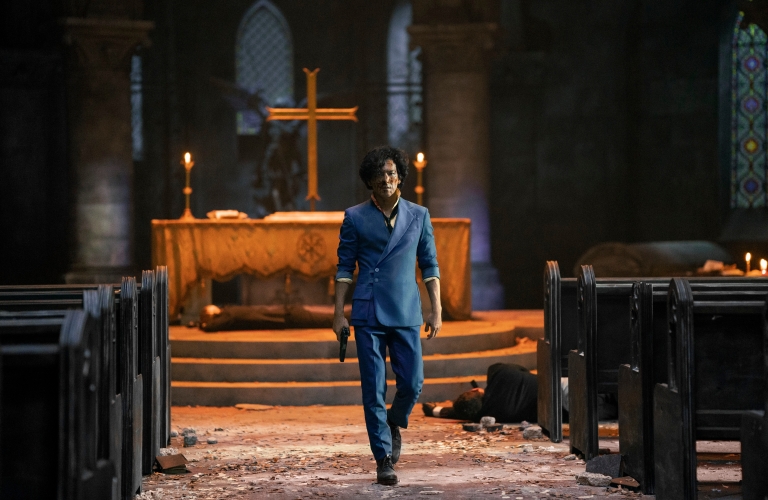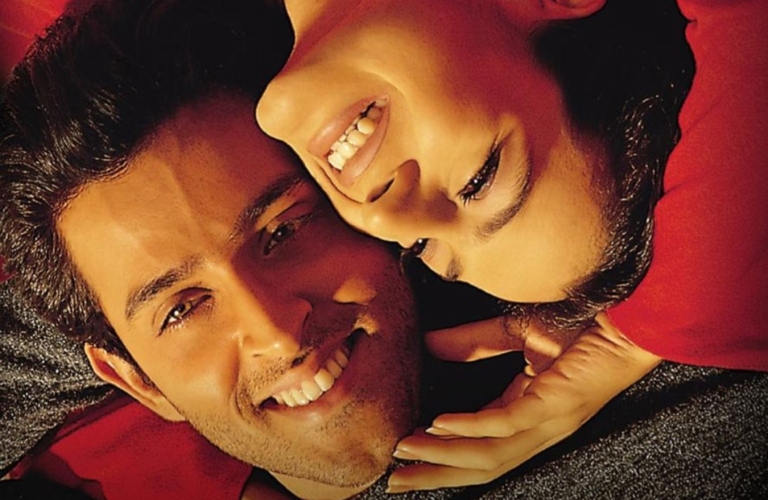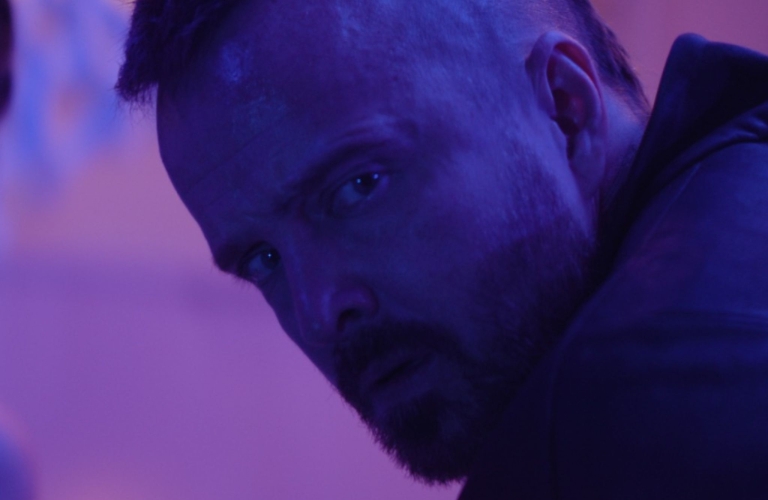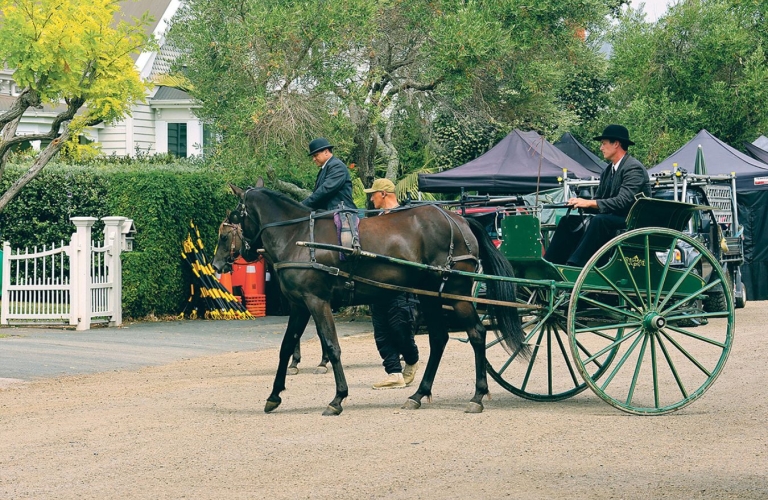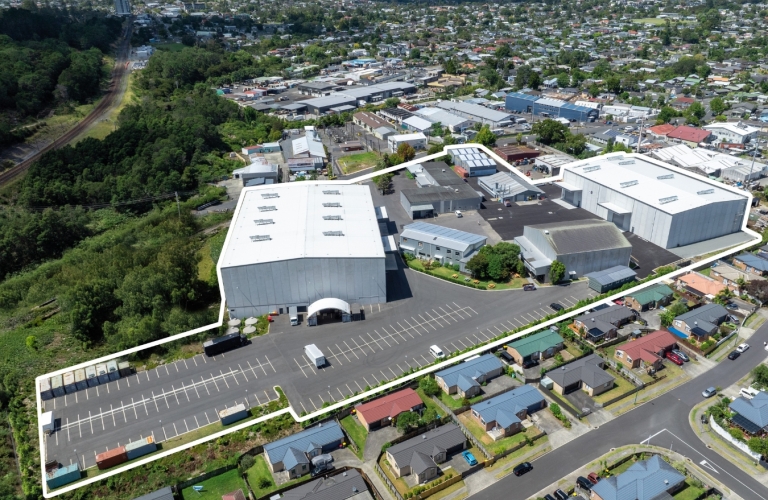A live-action version of the cult Japanese animated science fiction series of the same name, the 10-episode first season of Cowboy Bebop was filmed across Auckland from July 2019 through to March 2021.
Starring John Cho, Mustafa Shakir, Daniella Pineda, Alex Hassell and Elena Satine, Cowboy Bebop follows the adventures of a ragtag group of bounty hunters who form an unlikely partnership to chase down criminals across the solar system.
The production’s Auckland-based Supervising Location Manager Jordi Scott-Smith says effective partnerships were essential behind the scenes to ensure on-location shooting went to plan.
"When we were filming, the city was going through a fast-paced infrastructure metamorphosis and the challenge was to work together with stakeholders to ensure the best outcome for everyone."
Scouting locations
Filmed at 185 different sets and locations across the region in 186 days, Jordi and fellow Supervising Location Manager Clayton Tikao worked closely with organisations including: iwi; Auckland Transport; City Rail Link (CRL); Regional Parks; Eke Panuku Development Auckland; and local businesses.
The result is a quirky, cool and highly stylised series that showcases the strength of Auckland as a screen destination, while ensuring a successful outcome for the production, local communities and their people.
A team of screen attraction specialists at Tātaki Auckland Unlimited, the home of Screen Auckland, helped bring Cowboy Bebop to the region in partnership with New Zealand Film Commission. Jordi initially worked to showcase locations to key US-based Netflix representatives.
"We did look at other cities – I went down to Wellington and Dunedin with Netflix as well – and while those cities had some great looks, it came down to the location diversity that Auckland offers, as well as studio space."
Cowboy Bebop was based in East Tāmaki warehousing fitted out by Netflix to meet its studio needs under licence from Tātaki Auckland Unlimited, which leases and operates the site for screen production.
The intergalactic adventures of bounty hunters Spike Spiegel, Jet Black and Faye Valentine were filmed at locations including: Waitawa Regional Park, Monte Cecilia Park, Te Ōnewa Pā / Stokes Point Northcote Reserve, Onehunga Wharf, Auckland Museum, St Matthew-in-the-City, and several inner-city streets.
Tāmaki Makaurau Auckland's cultural landscape
Jordi says respect for the unique cultural landscape of Tāmaki Makaurau Auckland was top of mind for the Cowboy Bebop location team. Before shooting began, he liaised with James Brown, Chair, Ngāi Tai ki Tāmaki.
“We try to work closely with iwi right from the beginning to respect the history of the land, whether we’re in the city centre or beyond. It was awesome to have James do a karakia (prayer) to bless the show and studio. We also had tamariki visit the set, which was pretty cool as the screen sector opens up opportunities for employment too,” says Jordi.
Clayton Tikao worked closely with Zaelene Maxwell-Butler, Aukaha Pākaekae, Ngāi Tai ki Tāmaki, to ensure the Cowboy Bebop shoot at culturally significant Te Ōnewa Pā was achieved with respect for the area.
Zaelene, who frequently works with screen productions filming on Ngāi Tai ki Tāmaki whenua across Tāmaki Makaurau, says it all comes down to relationships.
It's about a production making sure respect is shown and having a willingness to work through the nuts and bolts of what it wants to achieve. Clayton was incredible, painting a thorough picture to alleviate any anxieties I might have had in terms of the cultural significance of the site.
For Zaelene, Cowboy Bebop was a 'perfect production' – from its initial engagement with Ngāi Tai ki Tāmaki, through to Zaelene being able to welcome the crew, carry out a cultural induction and karakia, conduct her iwi tikanga (customary practices) of kaitiakitanga (guardianship and protection) and manaakitanga (support and hospitality) prior to the shoot, and the final clean-up of Te Ōnewa Pā.
“Before the shoot they offered to clean up the banks around the pā – I didn’t ask them to, they offered. They had people abseiling on both sides of the site, cleaning up rubbish that had been thrown out of vehicles on the bridge and left by visitors to the pā. At the end of filming, they cleaned up beautifully and left it better than they found it,” says Zaelene.
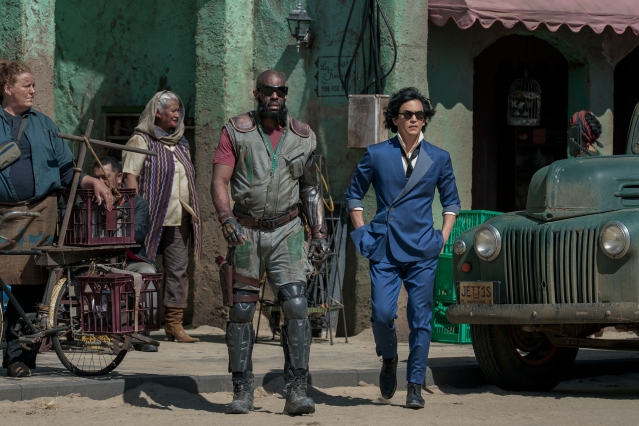
John Cho (Spike Spiegel) and Mustafa Shakir (Jet Black) on the set of Cowboy Bebop (Netflix 2021)
Creative visions and creative solutions
Cowboy Bebop broke new ground for the region’s thriving screen industry, being the largest shoot to take place in the city centre to date. Involving large-scale cranes and equipment, Jordi believes the shoot at the back of Mercury Lane and Cross Street is a great example of collaboration, but it wasn’t without stress.
“Netflix loved the location but initially, it wasn’t feasible because of impending demolition works for the City Rail Link. So, rather than emailing back and forth, I worked with Screen Auckland and called a meeting with Auckland Transport, City Rail Link and other stakeholders, showed them the creative vision and logistics for the shoot, and together we found a way to make it work,” says Jordi.
Cowboy Bebop filmed at Mercury Lane/Cross Street over four consecutive days, fitting around City Rail Link’s construction schedule and working alongside stakeholders to ensure minimal disruption to traffic flow, bus services, infrastructure projects and local business operations.
Steph Lockwood, Special Events Lead at Auckland Transport, says the central city can be an incredibly challenging space to activate given the traffic management implications, however early planning, and a clear vision from the outset, is critical to a production’s success.
Working to facilitate filming within our developing central city is much like a game of Tetris. With so much exciting activity taking place in such a small area, it’s a real task to negotiate the competing priorities and demands of various projects working harmoniously alongside one another.
Jordi says that beyond the larger organisations, one of the most important aspects of a location manager’s role is the interactions with small businesses owners who can be impacted by on-location shoots.
“A lot of our family and friends are small business owners and we understand the bottom line. We don't want to just come in and heavily impact on these businesses. It was a matter of sitting down with the owners and having an open book discussion about how we could help mitigate impacts. I had a great team on the ground who worked tirelessly consulting with everyone,” says Jordi.
The Mercury Lane/Cross Street shoot saw the Cowboy Bebop cast and crew enjoying food from local eatery Bo’s Dumplings. Jordi says the production purchased 800 hot dumplings in one night, which were delicious fuel when 3am hunger hit.
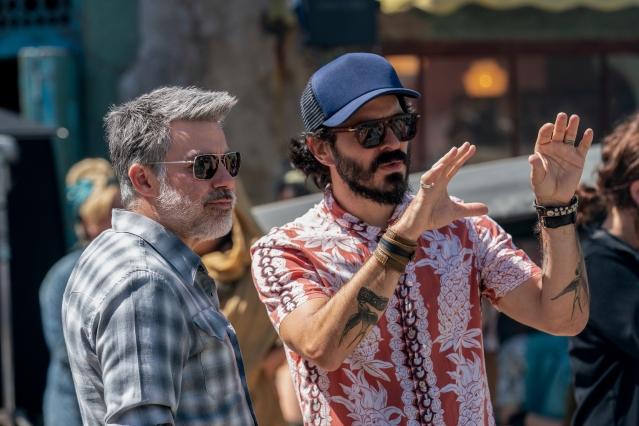
Showrunner André Nemec and Director Alex Garcia Lopez on set in Auckland.
Co-ordinating across the region
Jordi also worked with Eke Panuku Development Auckland to co-ordinate filming at Onehunga Wharf, a fully operational wharf and fishing fleet hub. The production team worked closely with the wharf and the Screen Auckland facilitation team for six months to achieve the best creative outcome within wharf regulations.
“Cowboy Bebop filmed in the quieter winter months, meaning the fishing fleets weren’t impacted. But we’re an operational wharf all year round and there are health and safety criteria that productions need to meet before filming can happen,” says Eke Panuku Head of Property Portfolio, Ruth Jost.
Jordi says meeting the regulatory and health and safety requirements of various organisations is an integral part of a location manager’s job.
“From traffic management plans to shooting stunts and special effects at Onehunga Wharf and Ardmore Airport – there was a lot involved. But once we were able to satisfy everyone involved, it went really well.”
Onehunga Wharf has hosted several productions over the past few years and Ruth says it’s great that local crews are now familiar with filming within its operational parameters.
“It’s really beneficial that Auckland crews have been here before. It means there are a lot of people who have a pretty good overview of how the place operates and what’s required. The wharf was able to stay open while Cowboy Bebop built a ramp and filmed fast-paced action scenes."
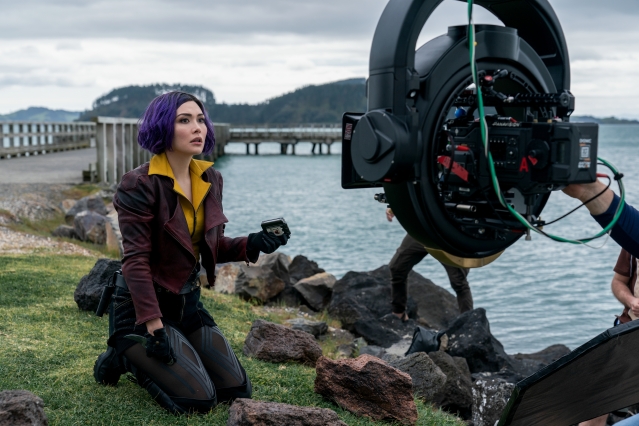
Daniella Pineda as Faye Valentine on location at Waitawa Regional Park, Auckland.
Considering local communities
The recreational fishing wharf at Waitawa Regional Park also features in Cowboy Bebop. Bronwen Lehmann, Senior Ranger for Auckland Council’s southern regional parks collaborated with the production to make sure public access to the park wasn’t significantly impacted.
“Waitawa is a high-value recreational park – it has walking, mountain bike and horse-riding tracks and the popular fishing wharf – so there’s a lot going on. The major consideration for this shoot was making sure the public could do their thing while the production was there,” says Bronwen.
Filming was initially planned for a quiet time at the park, but later re-scheduled for the school holiday period.
“Parks and the production worked together to put controls in place where needed and for the public, we did a lot of notification, had messaging around our noticeboards and went out to our local communities well in advance to let them know,” explains Bronwen.
Bronwen says as a result, the production and public were able to co-exist successfully.
“People were really curious when prop rocket launchers appeared in the park, but the crew were happy to have conversations and answer their questions. Clayton even sat on the wharf with a chilly bin full of snapper and gave it out to people who hadn’t got the message they wouldn’t be able to fish that day!”
Bronwen encourages others working with screen productions to keep an open mind because the benefits to the Auckland region are significant.
I have an attitude of never saying no – there’s always going to be a workaround or compromise on how we can achieve something together. For Regional Parks, it’s about promoting our spaces and sharing them with the rest of the country, let alone the world.
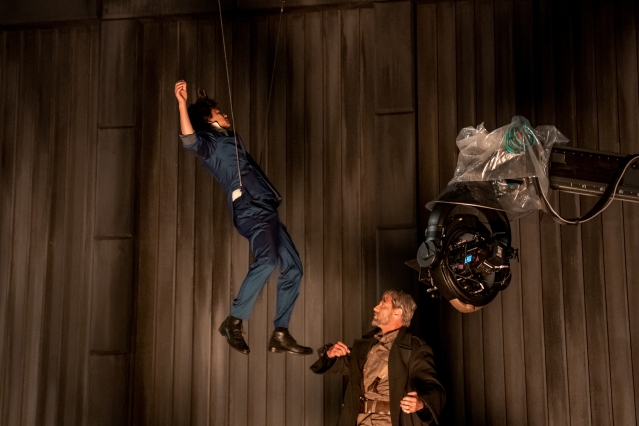
John Cho trained like a superhero for Cowboy Bebop's stunt scenes.
Jordi says location managers are always concerned about the potential impact of screen production on local communities and their people.
“Sometimes it feels like we’re causing a lot of inconvenience, but we pride ourselves on being ‘people people’ and solutions-focused. Once we start working in an area, we find most people are really positive, especially when they realise any interruptions are usually only for a few days rather than weeks or months,” says Jordi.
Success through collaboration
Jordi believes location-based shoots in Auckland are becoming easier as everyone gains more experience working with productions and that even better outcomes are possible with ongoing collaboration.
“Tāmaki Makaurau has so much to offer large-scale international productions but to keep bringing them here, there needs to be a certain level of assurance early in the piece. It's a tricky puzzle but amazing things can be achieved when we work together – just look at Cowboy Bebop.”
A co-production between Netflix and Tomorrow Studios (a partnership between Marty Adelstein and ITV Studios), Cowboy Bebop screens on Netflix.
Images courtesy of Netflix, 2021.
